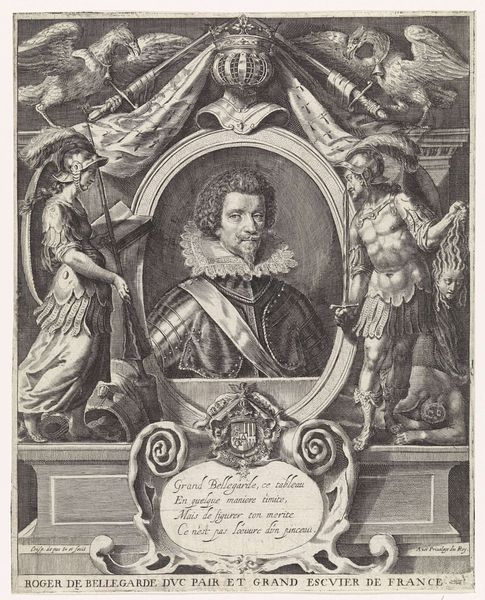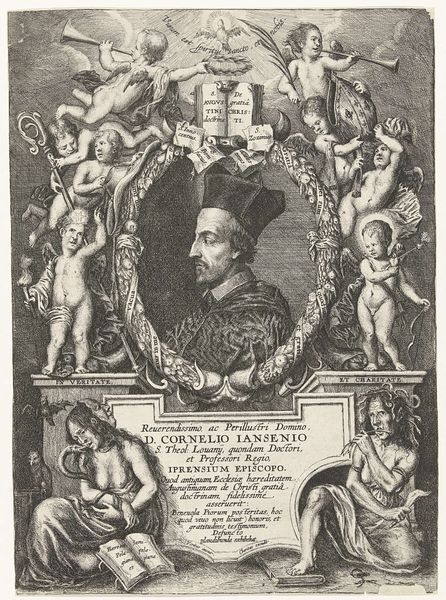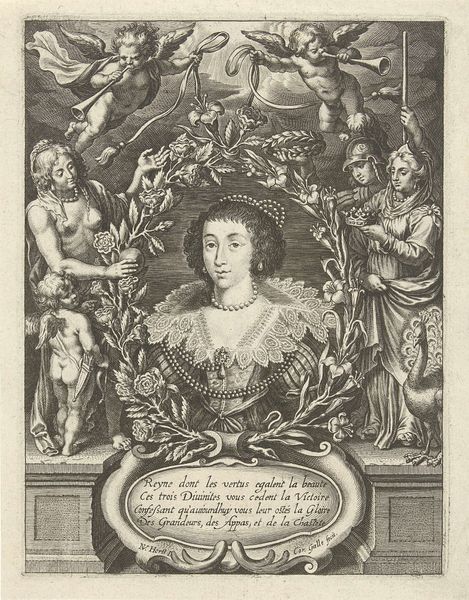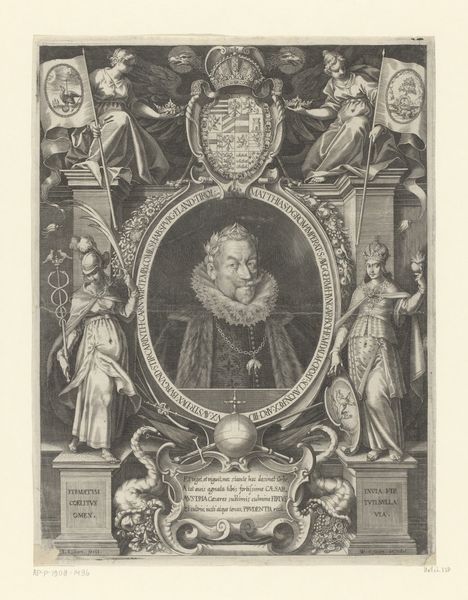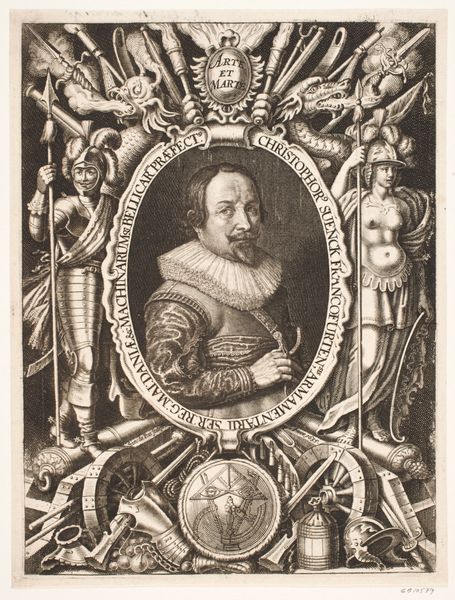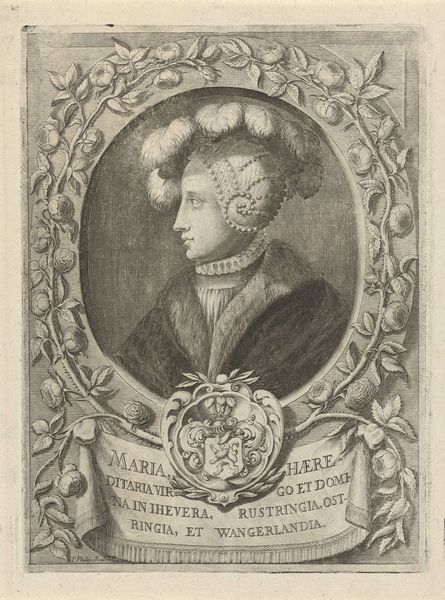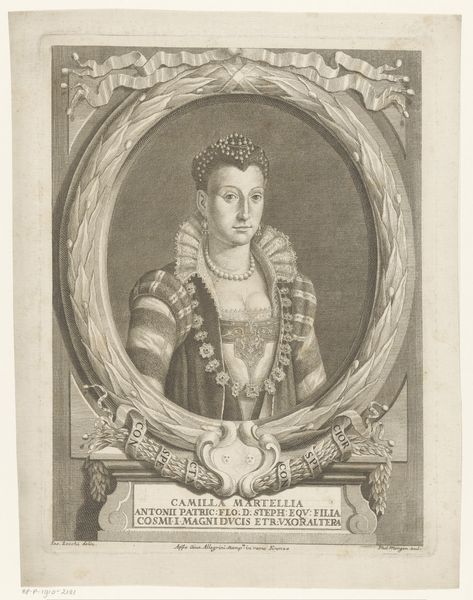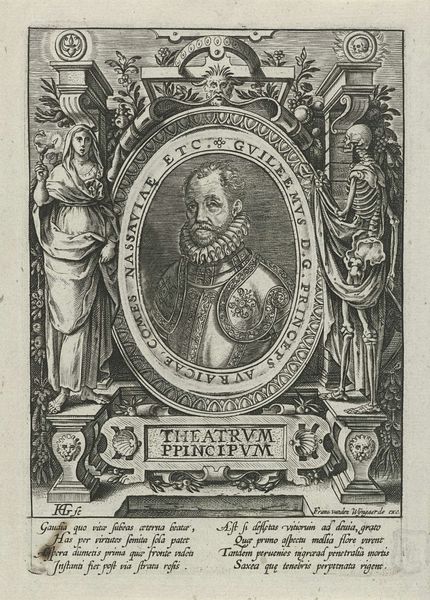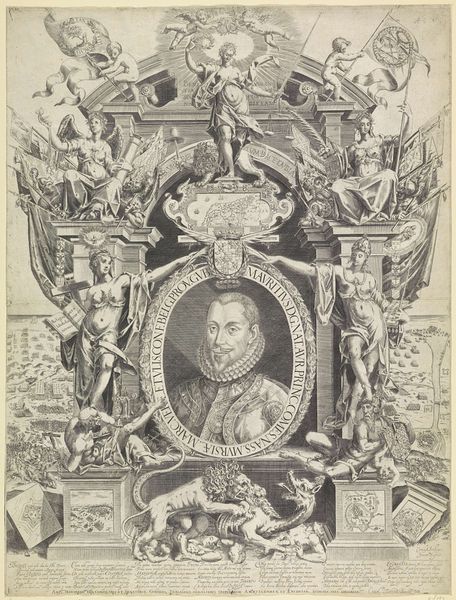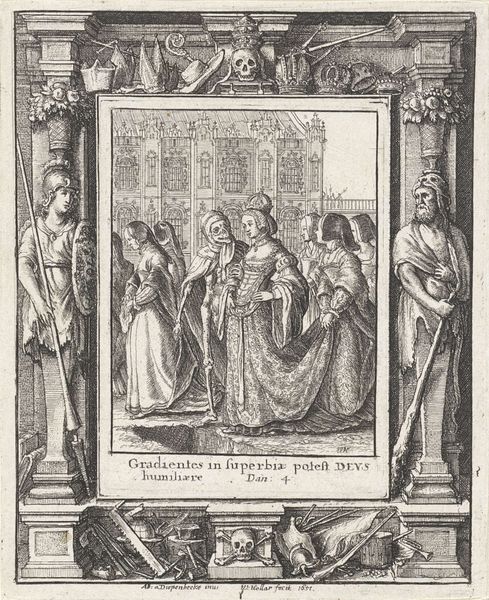
#
toned paper
#
pen drawing
#
mechanical pen drawing
#
pen sketch
#
old engraving style
#
personal sketchbook
#
pen-ink sketch
#
pen work
#
sketchbook drawing
#
pencil art
Dimensions: height 150 mm, width 115 mm, height 330 mm, width 228 mm
Copyright: Rijks Museum: Open Domain
Editor: Here we have Dominicus Custos’s "Portret van Maria Magdalena van K\u00f6nigsegg," made before 1620. It's a pen drawing on toned paper. The detail is astounding, almost photographic. How can we read this portrait through the lens of materials and making? Curator: I think this piece offers an incredible view into the social status interwoven into the very act of artistic production at the time. Consider the pen itself. Was it a quill? A metal nib? Each demands different levels of skill, each produces a different line, and each signifies varying access to resources. Editor: So, the choice of materials is as significant as the subject of the portrait? Curator: Absolutely! And look closer. Toned paper wasn’t cheap; it provided a surface upon which the ink could truly sing. This points towards a specific economic framework allowing for such a level of refinement and care in what may, on the surface, appear "simply" representational. Further, the old engraving style evokes mass production of imagery, which served the purpose of dispersing particular messages related to power, class and identity. Who had the means to commission such a likeness? Whose likeness was deemed worthy of such detailed, resource-intensive reproduction? Editor: It's easy to get lost in the image itself, but what you're saying is that the story is in the ink, the paper, and the very labor that went into creating it. Curator: Precisely! We should think about the division of labor required to prepare and create this artwork, and reflect on who had time to perform these kinds of "craft" activities. This challenges our conceptions of fine art, drawing attention to how materiality reinforces social and economic distinctions. Editor: I'll never look at a drawing the same way again. Thanks! Curator: And I learned to look more deeply into surface appearance by acknowledging the labor and resources necessary to build that very same appearance.
Comments
No comments
Be the first to comment and join the conversation on the ultimate creative platform.
